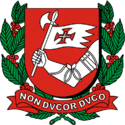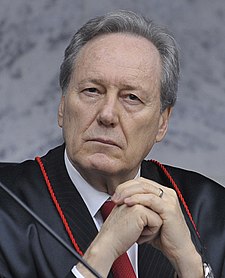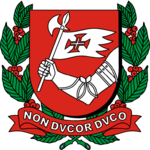President of Belmonte
This article is incomplete because it is pending further input from participants, or it is a work-in-progress by one author. Please comment on this article's talk page to share your input, comments and questions. Note: To contribute to this article, you may need to seek help from the author(s) of this page. |
| President of Belmonte | |
|---|---|
| Presidente de Belmonte (Luzelese) | |
 | |
 | |
| Government of Belmonte National Defence Council State Council | |
| Style | Mr. President (informal) The Most Excellent (formal) Excellency (international) |
| Status | Head of state |
| Member of | State Council · National Defence Council |
| Residence | Mascarenhas Palace |
| Seat | Castelonovo |
| Appointer | Direct election Two-round system Universal suffrage |
| Term length | Five years Renewable once |
| Constituting instrument | Constitution |
| Formation | 10 January 1793 |
| First holder | Jorge Aranha |
| Salary | $68,837 |
| Website | wwww.belmonte.gov.be |
 |
|---|
| This article is part of a series on the politics and government of Belmonte |
The President of Belmonte (Luzelese: Presidente de Belmonte), officialy the President of the United Republic of Belmonte (Luzelese: Presidente da República Unida de Belmonte), is the head of state of Belmonte and commander-in-chief of the Belmontese Armed Forces.
The office of the presidency was created after the liberal victory in the Federalist Revolt, leading to the establishment of the First Republic and the nomination of revolutionary Jorge Aranha as the first holder of the office. Previously, Belmonte's head of state was the Captain-Regent, a largely ceremonial post controlled by the rural oligarchic elites of the Confederation era. Initially, as part of the First Republic's presidential system, the post had a larger number of powers and influence than it has today, leading to a bigger centralization of powers as the country became a de facto one-party state under the Liberal Party, eventually leading to the 1828 Coup and the beginning of the Durão Era.
After the Belmontese Revolution and Durão's ousting of power, both liberal and conservative politicians would meet in Riachuelo to discuss long-term stability proposals for the newly-established Third Republic, resulting in the Riachuelo Agreement. The following constitution curtailed several powers of the presidency amid the establishment of a parliamentary system, but the post nonetheless had significant influence as a mediator among the two groups and would be rotated among both parties during most of the entirety of the Third Republic until the breaking of the agreement in 1906.
The National Renovation Coup would suspend the former constitution and give way to the authoritarian Berquó Era, who centralized all powers to the presidency once again and ruled through decree. The fall of the former dictatorial regime and the establishment of the New Republic in 1935 essentially stripped the presidency of all remaining powers, now seen as a largely ceremonial post that nonetheless still holds some duties.
Although considered to be a mostly ceremonial office, it's the role of the president to appoint and dismiss the premier and his or her cabinet, dissolve the National Congress, declare general elections and command the Armed Forces, however, all of these actions must have the consent and approval of either the premier or Congress. The president has the State Council and National Defence Council as advisory boards and is elected through the popular vote for a five-year term that could be renewed once.
While holding no real practical power, the presidency is seen as a highly honoured position and a national unifying figure by the majority of the Belmontese population.
History
Origins
Development
Since 1935
Selection
Qualifications for office
Election
Inauguration
— Presidential oath of office
Role and powers
Sucession
Impeachment and removal
Presidential office and symbols
Residence and office
Transportation
Salary
List
Living former presidents
There are two living former Belmontese presidents:
Afonso de Pádua
(1990-1995)Raposo Noronha
(2000-2010)




